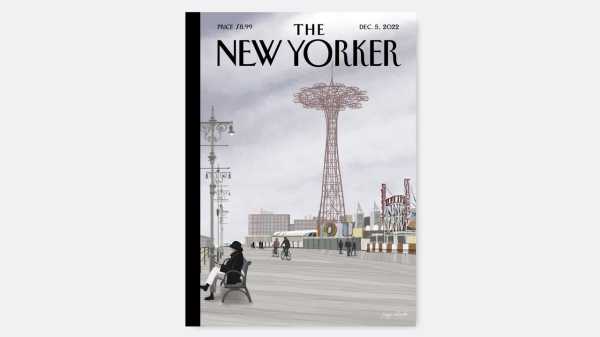
The Coney Island boardwalk is best known as a summer place, a spot for sunshine, swimming, or amusement-park rides. In his cover for the December 5, 2022, issue, Jorge Colombo captures the place in a different moment and mood, with a chill in the air and winter around the corner. New York City’s famous beach destinations—Coney Island, Brighton Beach, the Rockaways—are, of course, also year-round communities in their own right. Colombo’s illustration is almost an X-ray, revealing the underlying structure that’s easy to miss when the boardwalk is filled up with throngs of people who are just passing through. On grayer days, without the fair-weather crowds, such places might become even more themselves.
Why did you choose to portray Coney Island in the off-season?
Sometimes the underside of an up moment can have more depth than the moment itself. Coney Island is seen as a joyful place of effusion and communion, but I find the ghost of a party more touching than the actual party. And such a quasi-artisanal, non-corporate fairground is a bit of a historical relic. On each of my winter pilgrimages to Coney Island, it always feels like every time the wind has eroded a few sparks.
Then again, maybe I just don’t like to do drawings with blue skies. Gray clouds offer a much wider range of color options.
The artist gives a behind-the-scenes look at how he conceived of the image.
You’re originally from Lisbon, Portugal, a city with ancient roots whose history is surrounded by myth. Does your new home, New York City, also feel like a mythical place?
Yes, New York is an inspirational universe on its own. You can explore fiction and photos and illustrations and songs and movies and legends inspired by it and never get to the end of the list. It’s like the Bible or ancient mythology: endless variations on the theme. I always ask newcomers to New York, what was their main surprise, and what they were looking forward to the most and did actually find. We all build “our” New York in our head before we set foot on it. Lots come from art, of course: the New York in my head, shaped by images by the cinematographer and film director Gordon Willis or the French comic artist Jacques Tardi, coexists with the one I walk around in. It’s a Ping-Pong game of shaping my fantasy with details from reality—or vice versa. It’s a matter of gauging how off or on the mark one’s prior vision was. Lots of my work works as messages to my younger, pre-New York self, sending virtual postcards of places of legend I finally made it to. Coney Island is of course a cornerstone of pop culture, a standard of the New York City art canon: be it “The Warriors,” or Lou Reed, or Weegee, or the Mermaid Parade, most of us heard about it before we saw it in person.
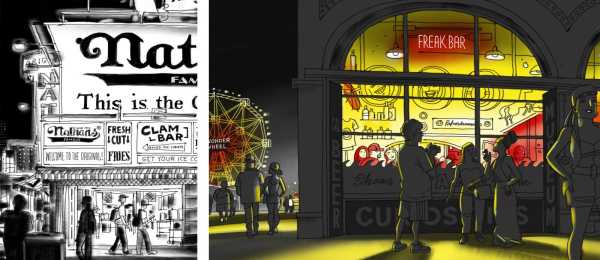
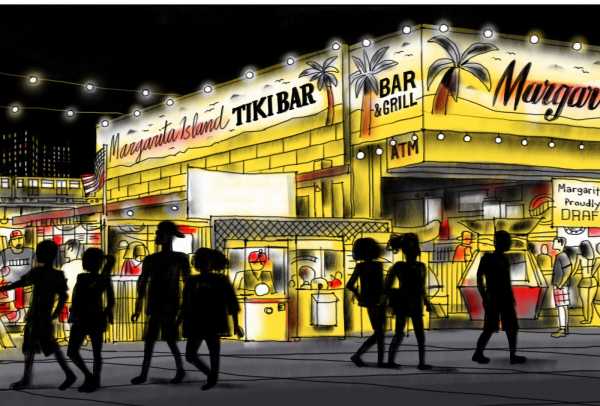
Lisbon is also rife with architectural masterpieces. Did that inspire your choice of venue here?
Everyone’s perception is biased, but in my mind I equate the European urban landscape with newness, and New York with the old. Sure, overseas are the centuries and the churches and the castles; but there’s also a pace of renovation that makes every bar and post office and train car feel kind of newish, shiny. New York survives under a coat of shabbiness. Infrastructures and devices once pioneering and glorious are now covered with a grime of obsolescence, dysfunction, neglect. (Case in point: the subway!) Sure, new stuff keeps sprouting, sometimes even rather glitzy; but more likely than not, new stylistic vocabularies, such as the pandemic-driven outdoor dining structures, tend to be born already with the chaotic overtones of something patched together over time. As a whole, New York can feel as tired and nostalgic, just the way Coney Island does.
You often draw onsite. Has the allure of drawing new places inspired you to be more adventurous in the city?
Oh, I always try to use different paths on my way everywhere. I never learned how to drive, so I discover everything thanks to the slow motion of the foot approach. It’s like advancing your footage one frame at a time. The goal is always finding a scene that by its scale, or temperature, or proportions, or details, or features, could only be New York and nowhere else.
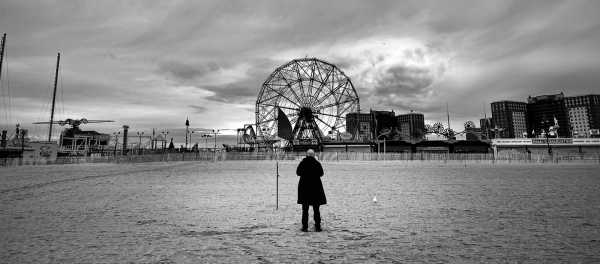
Photograph by Dani Case.
See below for more Coney Island covers:
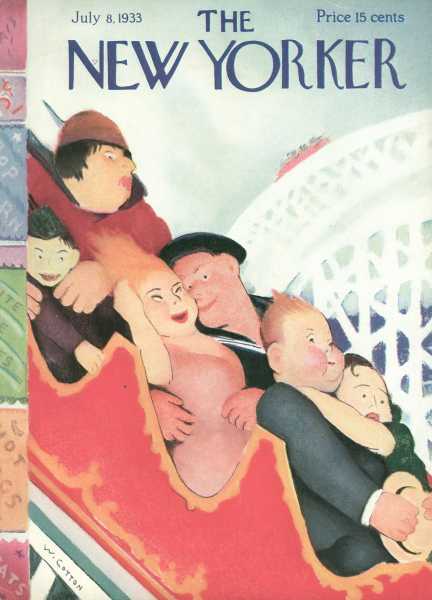
“July 8,1933,” by William Cotton
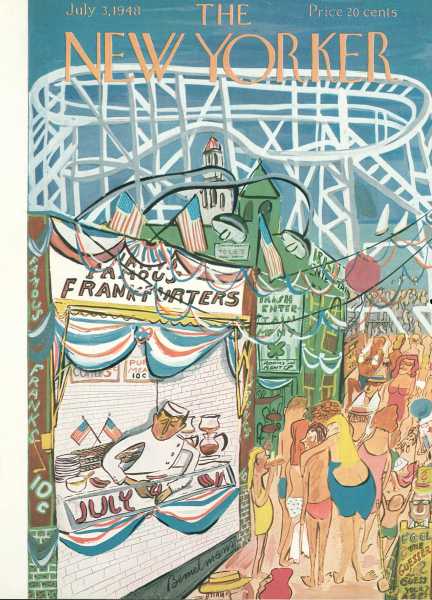
“July 3,1948,” by Ludwig Bemelmans
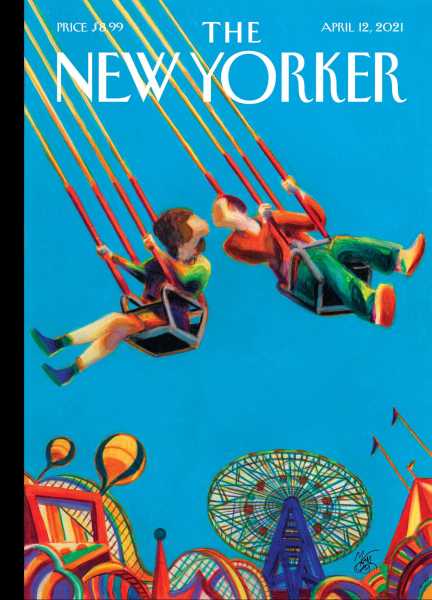
“Coney Island Swings Back,” by Lorenzo Mattotti
Find Jorge Colombo’s covers, cartoons, and more at the Condé Nast Store.
Sourse: newyorker.com